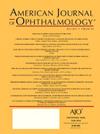Drugs Associated with Floppy Iris Syndrome: A Real-World Population-Based Study
IF 4.1
1区 医学
Q1 OPHTHALMOLOGY
引用次数: 0
Abstract
Purpose
Intraoperative floppy iris syndrome (IFIS) is associated with an increased rate of severe intraoperative complications and greater visual morbidity during cataract surgery, particularly in females. To date, no post-marketing pharmacovigilance study has comprehensively examined all FDA-approved drugs for their association with IFIS development or explored potential sex differences. Understanding the risk factors for IFIS allows cataract surgeons to better stratify surgical risks and implement appropriate preoperative and intraoperative measures to ensure adequate pupil dilation in high-risk patients.
Design
Retrospective pharmacovigilance clinical cohort study.
Methods
This population-based, observational study analyzed IFIS cases reported to the Food and Drug Administration Adverse Event Reporting System (FAERS) from October 2003 to March 2024 using OpenVigil 2.1. Disproportionality metrics, including reporting odds ratios (RORs), proportional reporting ratios (PRRs), and relative risk reductions (RRRs), were used to assess signals for positive adverse reactions (n>2, χ²>4, PRR>2), compared to all other drugs. Subgroup analyses were also conducted by sex.
Results
Of 12,345,128 adverse event (AE) reports, 649 (0.0053%) involved IFIS. The majority of cases were reported by healthcare professionals (75.75%, n=203), followed by consumers (12.69%, n=34) and unknown sources (11.57%, n=31). Drugs with the highest disproportionality for IFIS included imipramine (ROR=251.66, 95% CI=157.53-402.02), tamsulosin (ROR=171.44, 95% CI=143.12-205.36), and chlorpromazine (ROR=91.30, 95% CI=49.91-167.03) (all p<0.0001, IC025>0). Over-reported drug classes included α1-blockers, tricyclic antidepressants, atypical antipsychotics, carbonic anhydrase inhibitors, corticosteroids, 5α-reductase inhibitors, β-blockers, prostaglandin analogs, and β2-agonists. Among females, brinzolamide (ROR=409.63, 95% CI=196.78-852.73) and salbutamol (ROR=67.12, 95% CI=28.37-158.80) were disproportionately associated with IFIS (both p<0.0001, IC025>0), whereas these associations were not observed in males.
Conclusions
This analysis of over 20,000 drugs and 12 million reports highlights that, in addition to α1-blockers and atypical antipsychotics, tricyclic antidepressants are among the key agents most disproportionately associated with IFIS, with notable sex differences. These findings are crucial for informing perioperative counseling and surgical planning for cataract surgery.
求助全文
约1分钟内获得全文
求助全文
来源期刊
CiteScore
9.20
自引率
7.10%
发文量
406
审稿时长
36 days
期刊介绍:
The American Journal of Ophthalmology is a peer-reviewed, scientific publication that welcomes the submission of original, previously unpublished manuscripts directed to ophthalmologists and visual science specialists describing clinical investigations, clinical observations, and clinically relevant laboratory investigations. Published monthly since 1884, the full text of the American Journal of Ophthalmology and supplementary material are also presented online at www.AJO.com and on ScienceDirect.
The American Journal of Ophthalmology publishes Full-Length Articles, Perspectives, Editorials, Correspondences, Books Reports and Announcements. Brief Reports and Case Reports are no longer published. We recommend submitting Brief Reports and Case Reports to our companion publication, the American Journal of Ophthalmology Case Reports.
Manuscripts are accepted with the understanding that they have not been and will not be published elsewhere substantially in any format, and that there are no ethical problems with the content or data collection. Authors may be requested to produce the data upon which the manuscript is based and to answer expeditiously any questions about the manuscript or its authors.

 求助内容:
求助内容: 应助结果提醒方式:
应助结果提醒方式:


